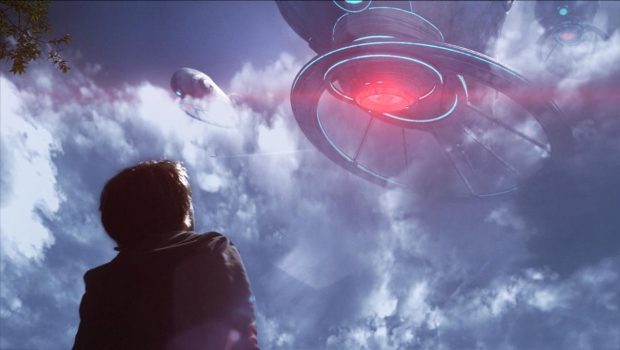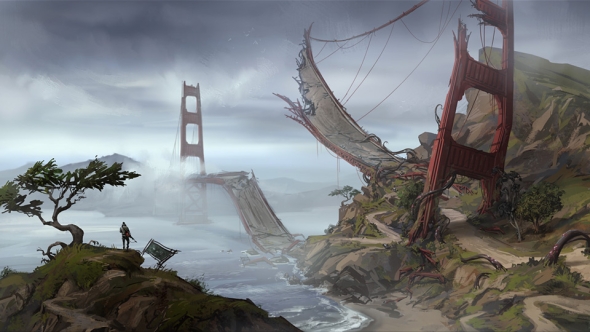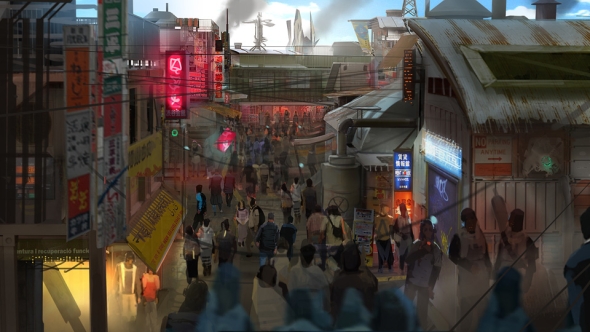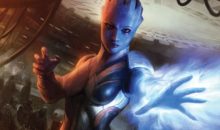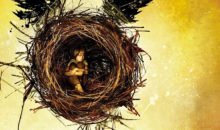INTERVIEW: We Chat with Defiance Executive Producer, Nathan Richardsson
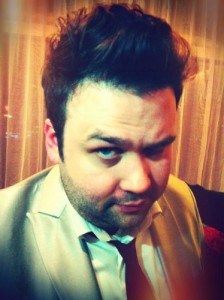 Defiance is Syfy’s hugely ambitious transmedia sci-fi project that is set to dive into telling its story simultaneously through a third person shooter/MMO game, a traditional television series and a few other platforms moving forward.
Defiance is Syfy’s hugely ambitious transmedia sci-fi project that is set to dive into telling its story simultaneously through a third person shooter/MMO game, a traditional television series and a few other platforms moving forward.
We raved about the exciting TV trailers not too long ago, and recently GEEKPR0N had a chance to chat with Nathan Richardsson, Executive Producer on the Defiance project.
Can you start by telling us a little bit about your role on the Defiance project? Can you tell us what an average day at work on Defiance is like for you?
Nathan Richardsson – I’m the Executive Producer of Defiance. That means I’m the person responsible for the game and it’s team of a 150 people. I spend my time mostly talking to people and simply being there to empower them and remove blockers that prevent them from achieving the goals we are trying to achieve. I also drink a lot of tea and long evening replying to emails after having spent the day talking. I also like spandex and conquering worlds which may or may not be relevant to your interests.
How does this experience differ from previous projects you’ve worked on?
NR – I’ve tried so many variations, multiple teams, larger teams, smaller teams and I’ve been doing product development for 15 years so I have a broad background of people, projects and companies that helped me learn what I’m applying today for Defiance so many things I’ve encountered before.
The difference in this case would be the enormous scope of the project, where we have a TV Show and a game on PC, XBOX and Playstation 3 built from the ground up as a new universe suited for these multiple platforms. That’s apparently wasn’t enough of a challenge so we decided to make it more difficult by having the TV Show and the game interact. The weather is also nicer here in San Diego than Iceland so that doesn’t hurt.
Defiance is a first in the way it merges a game and a television series within one world and has the events unfold simultaneously within that world. What kind of challenges and/or advantages have you encountered in this project that is breaking a lot of new ground in the entertainment industry?
NR – The main challenges were in understanding and learning how a TV show is created and how a game is created. These are very different processes and have their entire set of limitations and challenges which we all have to be aware of. Like aircraft, they are expensive to have in TV show but cheap in games.
It’s also identifying the areas where we can have effective cross-over events, not just where the show and game can hand off the storytelling but also affect each other. That hasn’t been done on this scale before.
So I’d say the opportunities are so many that they are almost the biggest problem. Like, what happens at the end of Season 1? Where do the players take the story between seasons? How will it affect what happens in Season 2? It’s this potential which we’re exploiting, pushing the envelope on how people experience a new universe across multiple mediums. Then we remember we have a show and game to launch and have to focus. But we can’t complain, this is all pretty awesome.
Do you find that the storytelling demands of a television series are different than those of a game? How do you manage juggling those needs when they conflict?
NR – They demands are very different at times. In the game, you are an active participant in your own story. In the show, we’re focusing more on a character drive drama rebuilding civilization. A big part to be able to do this was giving us freedom instead of bowing to the limitations.
If everything was dictated by our combined limitations, we’d get nowhere. This is also what’s killed many licensed games and shows so we’re doing it differently and we simply aren’t licensed. We created it all from scratch for both mediums.
We achieved much of the storytelling freedom with the geographical separation. The game is set in San Francisco and the show in St. Louis, the former a more barren, new frontier and a better fit for a shooter while St. Louis is cityscape allowing for a more complex backdrop.
That also meant far less conflict between the teams and essentially, we decide on the areas beforehand in the history and setting of the world, where we have to be entirely in sync and other areas where we have freedom, enabling us to exploit fully the different mediums.
How often can we expect the stories to cross over from the game to the show and vice versa?
NR – Every time we air a show, there is some form of crossover and there can be multiple affecting factors, ranging from very localized singular events to world-changing events. These events also continue in the game between airings of the show seasons, where the game and the players are the main drivers of the storyline.
Can you talk to us a bit about the process of maintaining story continuity while creating different paths of story across two different modes of media?
NR – You can think about it as a world story arc, then you have different paths, one in San Francisco and one in St. Louis. Things happen in the world which affect both and in some cases, people or organizations affect each other between the locations. We simply map these out in advance and maintain a constant relationship with writers and designers that manage this timeline, the continuity, important characters and organizations. We use a common internal wiki and regular meetings, workshops and so on so it’s really applying the same thing as you would in a relationship, communication! Doesn’t always go well, it’s difficult and hard work but we’re intent on making it work.
As transmedia storytelling becomes more prevalent, do you envision Defiance branching out into more types of media in the future?
NR – We already are and you’ll see a little bit here and there which might give you hints. I believe though that these need to be connected experiences somehow affecting each other. So while we have online presences, mobile or tablets in the same world, the magic really happens when it’s moving forward the history of an entire world across mediums that can affect each other.
What level of customization can game-players expect for creating their characters in the Defiance game?
NR – We’re much more a third-person shooter than a full-fledged MMO in that respect so you’ll have an array of visual customization, both in terms of outfits, vehicles as well as physical appearance and how your weapons look. We also evolve this constantly throughout the lifetime of the game.
How much user and viewer feedback do you foresee being incorporated into the Defiance universe and the project progresses? Will varying lead times in producing game and television elements affect this?
NR – Players will affect our world quite a lot, that’s very much how we operate at Trion and we believe that the player should not just be a consumer of content but a participant in a world he can affect. It’s going to be of varying degrees, some feedback ends up in the expansion and development of the game, some is through the outcome of events during and between the series, some will be emergent gameplay.
We’re constantly developing the game, so we can respond to what emerges and use that to mold the future. The lead times for the mediums do affect us but we’ve learnt so much now that we’re already seeing a ton of new opportunities. The experience we have allows us to work around some of the challenges and new technologies enable us take the cross-over interaction and storytelling even further in the future.
Have you found that the story, or characters have changed since the actors began filling those roles? Were there any characters that became more prominent in the story since casting?
NR – That always happens, both in the show and the game. Defiance has been in development for 5 years now and we’ve taken some major turns during that time. This especially happens on set for the show and that has been part of the back and forth between the teams, adapting to actors and new circumstances.
How do you feel about the comparisons to Firefly and Battlestar Galactica in the reactions to the show trailers? To me these parallels are high praise, I think I saw a little Blade Runner influence in the trailers too!
NR – I think those comparisons are very flattering, we’re big fans on the team and being compared to them is also a certain validation that people perceive our scope and production quality as very high. That’s one goal achieved, now we just have a couple of others left, like launch and generally continue heading in the awesome direction.
Is there any other Defiance scoop you can fill us in on while we look forward to experiencing the series and game?
NR – I totally shouldn’t be telling you this but we had originally intended to have zombie sharks and they got cut in favor of space unicorns. But Defiance is very much about hope, so let’s not rule anything out in the future. I’d also keep an eye on our upcoming campaigns, we’re trying out a lot of new stunts with Defiance, we felt it was appropriate with our already high ambitions.

